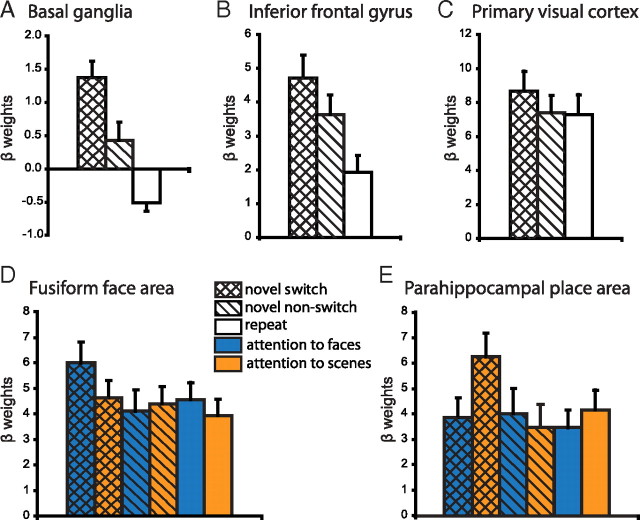Figure 5.
To illustrate the pattern of responses in our VOIs, we extracted the β weights for each subject from the group peak voxels [MNI coordinates (x, y, z)] from the novel switch versus repeat contrast. Here we display the mean ± SEM β weights across subjects. A, B, Novel stimuli increased BOLD responses in the BG [coordinates (10, 10, 0)] (A) and the IFG [coordinates (48, 10, 28)] (B) even when they were not detected. Supplementary repeated-measures ANOVA revealed a significant interaction between region (BG vs IFG) and novelty (novel switch + novel nonswitch vs repeat) (F(1,1) = 10.2, p < 0.01), suggesting that the IFG is particularly important for processing novel information. C, In contrast, in the primary visual cortex [coordinates (14, −80, 8)], BOLD responses increased only when the novel information elicited an attention switch. D, E, β weights for the FFA (D) and the PPA (E) were extracted from the individual localizer-defined VOIs using the supplementary GLM (model B). These areas showed stimulus-specific effects, such that the BOLD response in the FFA increased when an attention switch was elicited by a novel face but not a novel scene, whereas the reverse effect was found in the PPA.

